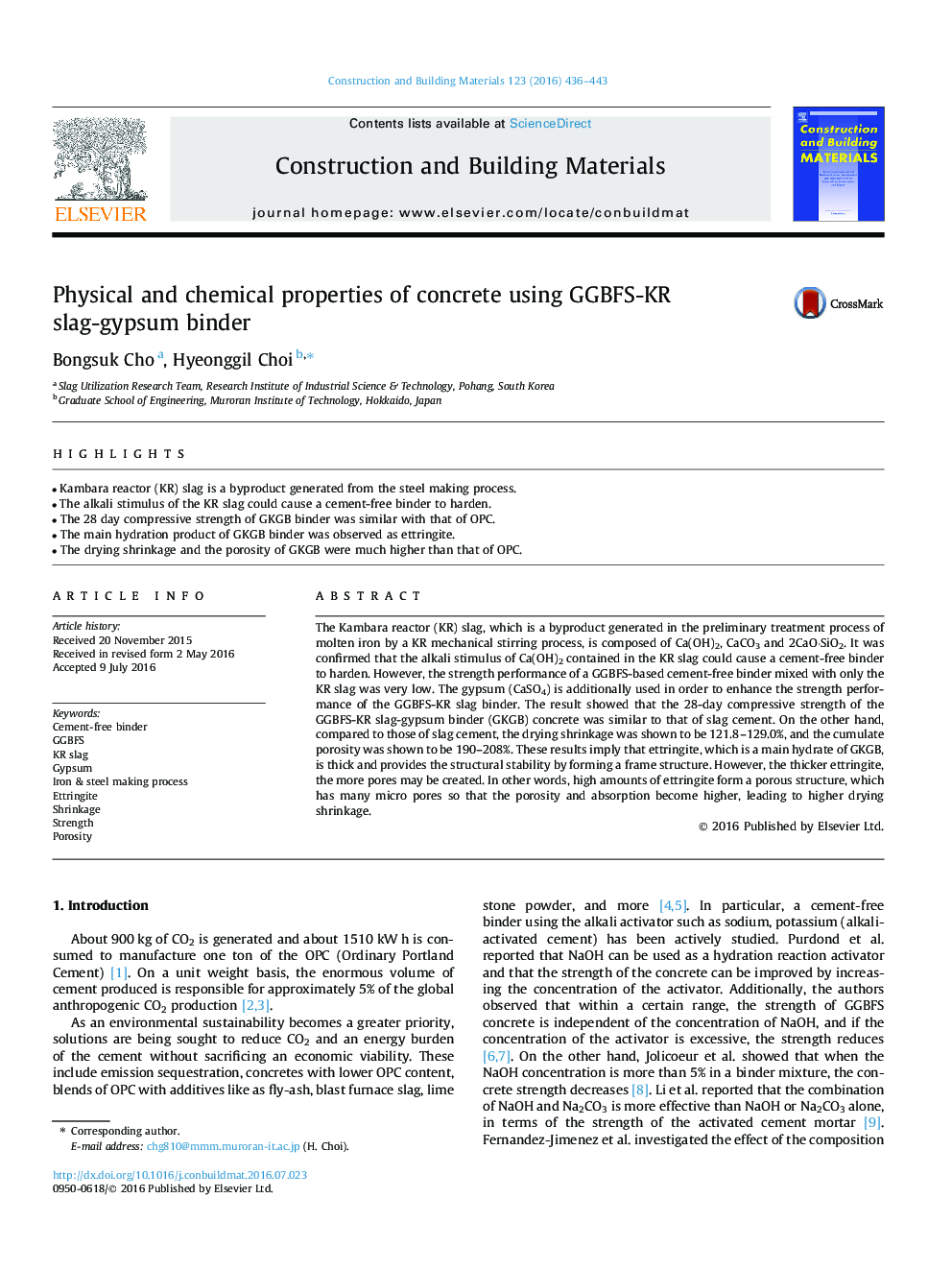| Article ID | Journal | Published Year | Pages | File Type |
|---|---|---|---|---|
| 255768 | Construction and Building Materials | 2016 | 8 Pages |
•Kambara reactor (KR) slag is a byproduct generated from the steel making process.•The alkali stimulus of the KR slag could cause a cement-free binder to harden.•The 28 day compressive strength of GKGB binder was similar with that of OPC.•The main hydration product of GKGB binder was observed as ettringite.•The drying shrinkage and the porosity of GKGB were much higher than that of OPC.
The Kambara reactor (KR) slag, which is a byproduct generated in the preliminary treatment process of molten iron by a KR mechanical stirring process, is composed of Ca(OH)2, CaCO3 and 2CaO·SiO2. It was confirmed that the alkali stimulus of Ca(OH)2 contained in the KR slag could cause a cement-free binder to harden. However, the strength performance of a GGBFS-based cement-free binder mixed with only the KR slag was very low. The gypsum (CaSO4) is additionally used in order to enhance the strength performance of the GGBFS-KR slag binder. The result showed that the 28-day compressive strength of the GGBFS-KR slag-gypsum binder (GKGB) concrete was similar to that of slag cement. On the other hand, compared to those of slag cement, the drying shrinkage was shown to be 121.8–129.0%, and the cumulate porosity was shown to be 190–208%. These results imply that ettringite, which is a main hydrate of GKGB, is thick and provides the structural stability by forming a frame structure. However, the thicker ettringite, the more pores may be created. In other words, high amounts of ettringite form a porous structure, which has many micro pores so that the porosity and absorption become higher, leading to higher drying shrinkage.
